Monitoring dew point temperature at your helm, why and how
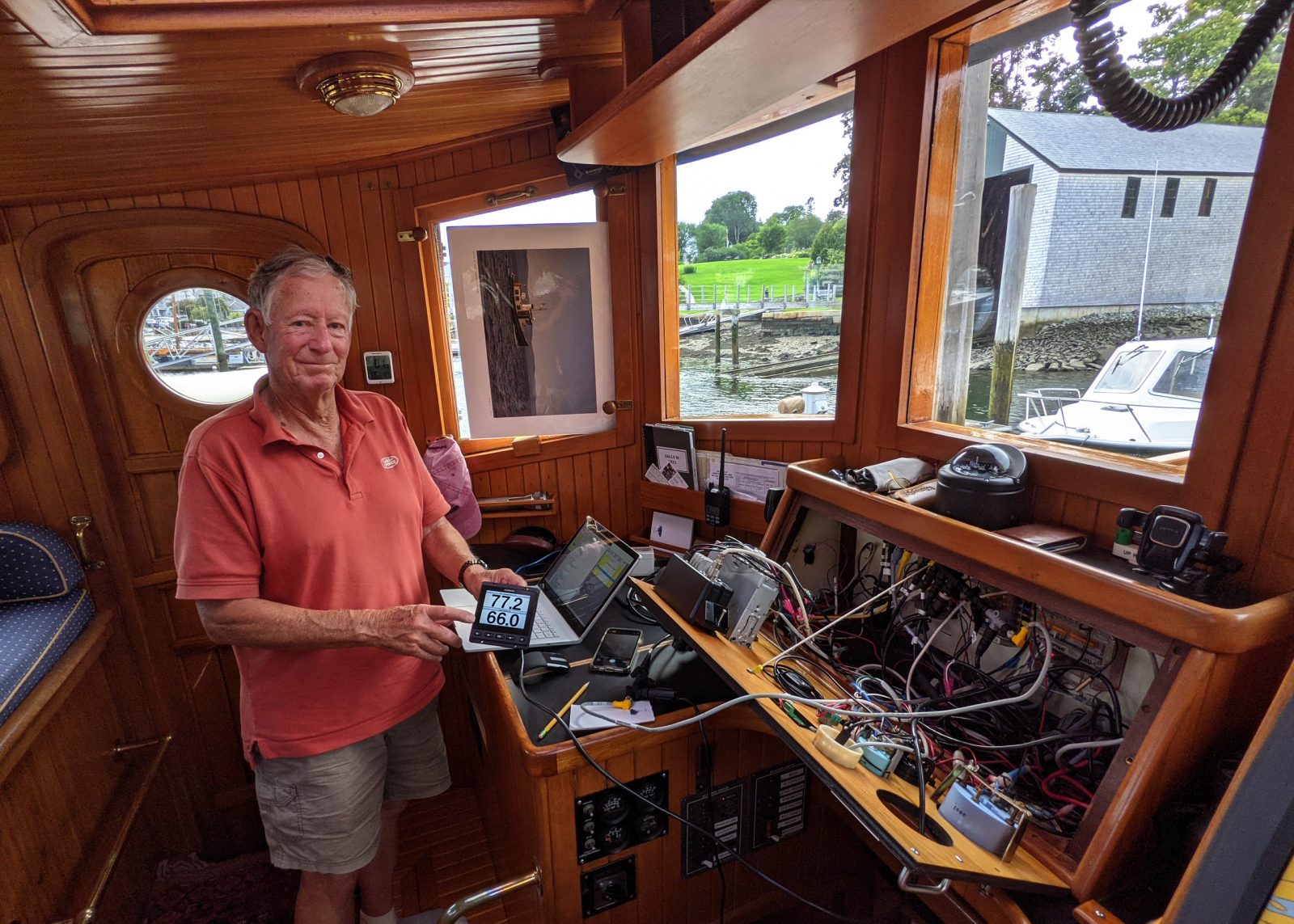
Allan Seymour wants to see the current Dew Point and outside Air Temperatures at the helm of Sally W because fog is often about to shut in when the two temps become similar. And there are at least three marine sensors that claim to deliver dew point over NMEA 2000, two of which Allan owns. But actually getting the value to show on his instrument display turned out to be quite a challenge. I helped with the troubleshooting, and came to better appreciate the value of dew point in the process.
“Dew point is the temperature the air needs to be cooled to (at constant pressure) in order to achieve a relative humidity (RH) of 100%” and so the temps you’re seeing above on Allan’s Garmin GMI 20 indicate air almost completely saturated with water. In fact, the fog was already thick around Sally W in Camden Harbor that August 20 morning, though air temp increasing faster than dew point would soon forecast a burn-off.
That morning the fog also lifted at my house a mile inland and l was later able to graph the divergence between air and dew point temps thanks to the excellent Tempest Weather Station I installed on my roof last February. And, yes, the fog closed back in that night and hung with us for days. (You can see that graphical history and/or real-time conditions at my public Tempest webpage or my associated Weather Underground Station.)
But if fog and dew occur as atmospheric conditions approach 100% relative humidity, why not just monitor humidity? The National Weather Service explains why dew point better indicates how “humid” it will feel outside, and let’s note that it’s much easier to compare (and graph) dew point and air temps simply because they’re in the same denomination. Plus, as I finally explore the subject, I’m impressed with how important dew point is to airplane pilots.

Airmar 220WX WeatherStation 
Yacht Devices Humidity Sensor 
Maretron WSO100 wind sensor
Some old salts who already value dew point use an analog tool called a sling psychrometer to measure it, though the process is a bit of work (as shown in this good explainer video). However, dew point can also be calculated using air temperature and relative humidity, both of which are measured electronically by the three NMEA 2000 marine sensors above. I wish I could say that all three devices also calculate dew point and output it on N2K, but the truth is more complex.
Actually, the situation on Sally W was doubly complicated when I came on the scene. The manual for Allan’s Airmar 220WX WeatherStation indicates dew point output — because he had also purchased the humidity sensor option — and his elderly Garmin GMI 10 was able to display a data window labeled Dew Point. But there was no number in it, and we eventually learned that both devices were guilty.

Maretron DSM410 calculates Dew Point from Airmar WX data 
Junior’s Garmin GMI 20 displays data from Yacht Device humidity sensor
I brought along a Maretron DSM410 on my first troubleshooting visit and it showed Dew Point as soon it was attached to Sally W‘s N2K network. So the problem was only the GMI 10? Well, we couldn’t tell for sure because Maretron displays can calculate dew point if they see air temperature and relative humidity data on the network, as suggested in the description of their WSO100 ultrasonic wind and weather station (now discontinued, I don’t know why).
Then Allan remembered that he had once purchased a Yacht Devices YDHS Humidity Sensor, but he hadn’t been able to see the dew point (he so desired) on the GMI 10, and so he stuck it in a drawer. Like the Airmar WX, the YDHS purportedly does its own dew point calculations, and its manual describes output using two standard NMEA 2000 temperature PGNs that support Dew Point as a “Source” (or type).
So the GMI 10 really seemed to be the problem. Moreover, Garmin tech support apparently agreed that there was dew point display issue and told telling Allan that if sent the GMI 10 in, they would either fix it or send him GMI 20. And when I tried Allan’s YDHS sensor with the GMI 20 installed on Gizmo Junior (as shown at right above), and the 20 nicely displayed all the YDHS data, dew point included.
Allan got so excited that he bought a GMI 20 himself (figuring that Sally W could use two if Garmin came through). But when he installed it on his N2K network with the Airmar 220WX, a dew point number did not show up. Doh!
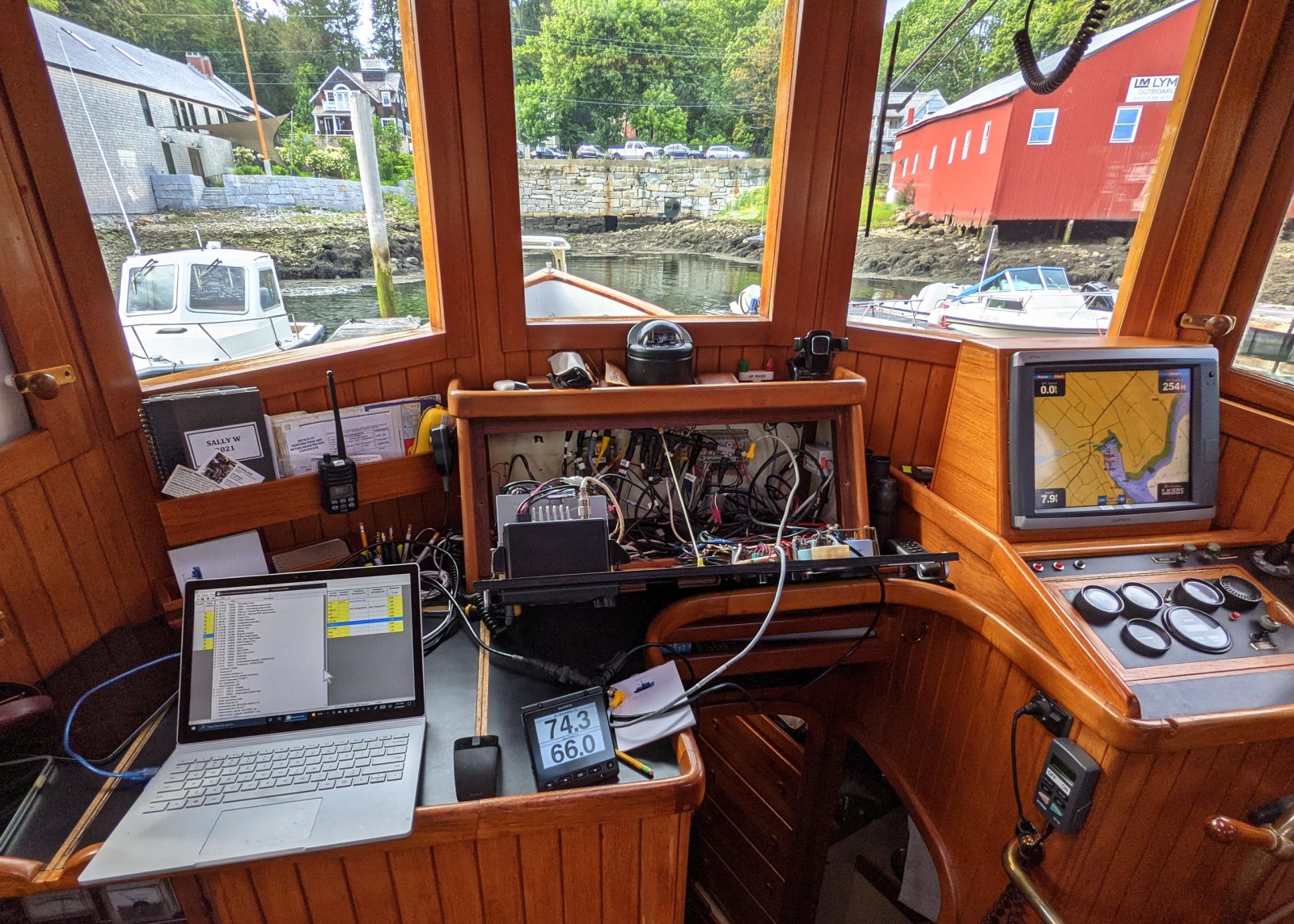
So it was time to get serious about the troubleshooting, and this time I showed up with a Windows laptop and NMEA 2000 to USB gateways from both Maretron and Actisense. That way I could diagnose the Airmar WX’s output using either N2KAnalyzer or NMEA Reader, each of which can be more informative, depending on the circumstances (and in my experience).
The Actisense NGT-1 also meant that I could run Airmar’s WeatherCaster display and configuration software, which turned out handy. Because when we could not detect a dew point temperature PGN coming from Allan’s 220WX, Airmar tech support said we could enable it with WeatherCaster. But that only turned out to be partially true.

Airmar WX can only output dew point in proprietary PGN 130880 
Yacht Device HS outputting dew point in standard PGN 130316
The only 220WX PGN with dew point that I could activate with WeatherCaster — by increasing the transmission interval to more than 0.0 times per second, as shown at left above — is called “Additional Weather Data” and was created by Airmar. So, yes, a Dew Point gauge started to work in WeatherCaster on my laptop and the value was going out to Allan’s N2K network, but no other company’s display is going to show it unless special programming has been done.
The Garmin GMI 20 definitely can not display the dew point temp contained in proprietary PGN 130880, and Airmar tech support doesn’t know of a display that does (aside from the WeatherCaster PC software). They were also apologetic about their initial claim that the WX outputs dew point over the standard Temperature PGN 130312 (like it does with Air Temperature), and said that the Airmar engineering department will consider a firmware update.
If that happens, the WX output will probably look a lot like what I saw coming from the YDHS using N2KAnalyzer (upper right). Yacht Devices uses both 130312 — for backward compatibility with older N2K displays — and the newer “Temperature, Extended Range” PGN 130316. This should put Dew Point (plus Humidity and Air Temp) on most any N2K display, though there’s never a guarantee and let’s hear from anyone who has had trouble with this.
Meanwhile, Allan installed the YDHS in the stack of his Lord Nelson Victory Tug and set up his GMI 20 to display its data instead of looking for it from the WX. So he finally has the current Dew Point and Air Temperatures in Sally W‘s wheelhouse, though the shortcomings of the GMI 10 and the 220WX were a bit discouraging along the way. (At least both tech support teams were responsive, and both products do a whole lot well.)
But those shortcomings also suggest that many boaters are unaware of how dew point can forecast the arrival or departure of fog. I certainly was, but I’ve seen it work now — thanks, Allan — and plan to have it on Gizmo when she hopefully heads Downeast next summer. What are your thoughts on this subject, and are there other sensors that can put dew point on a boat display?



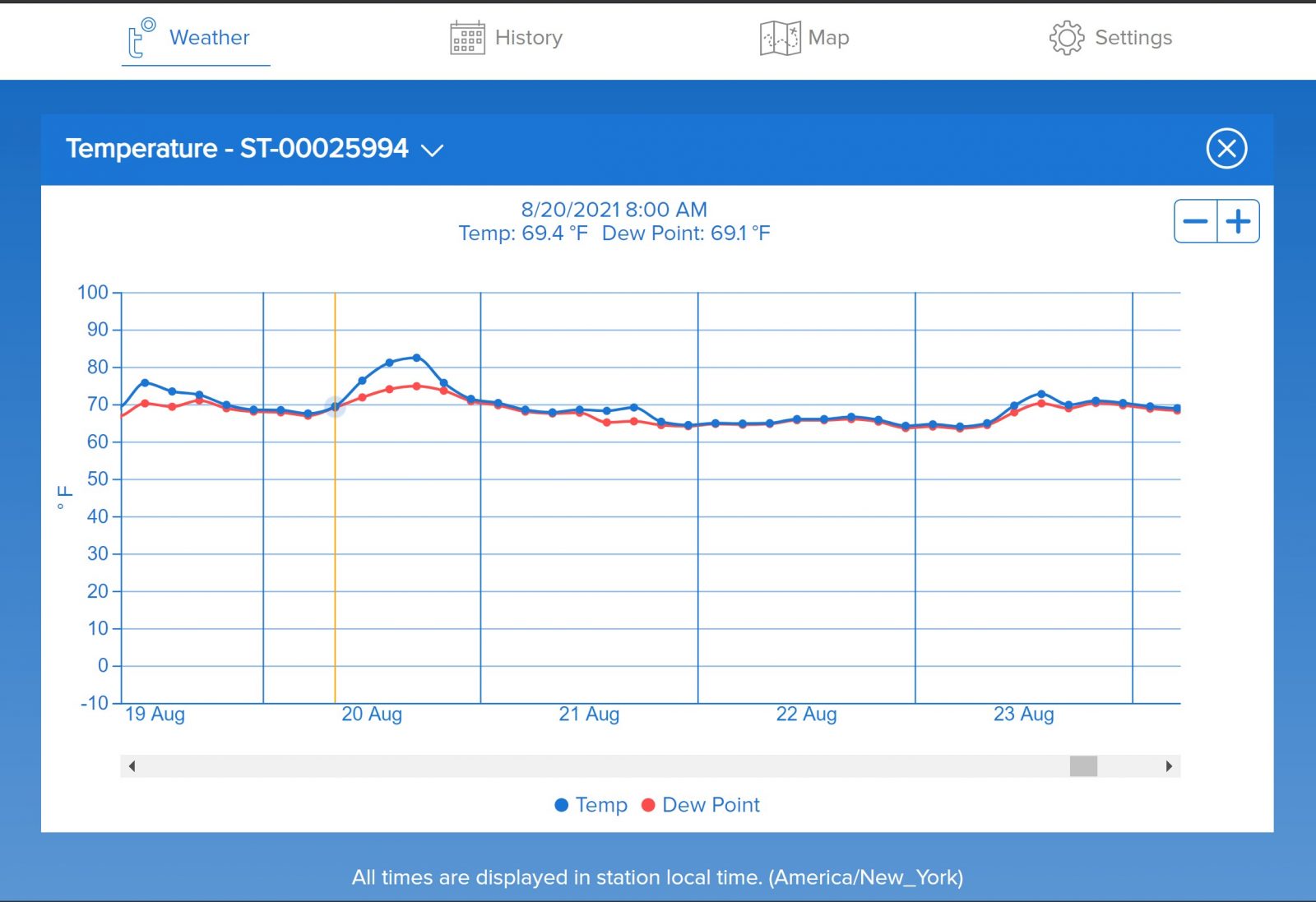
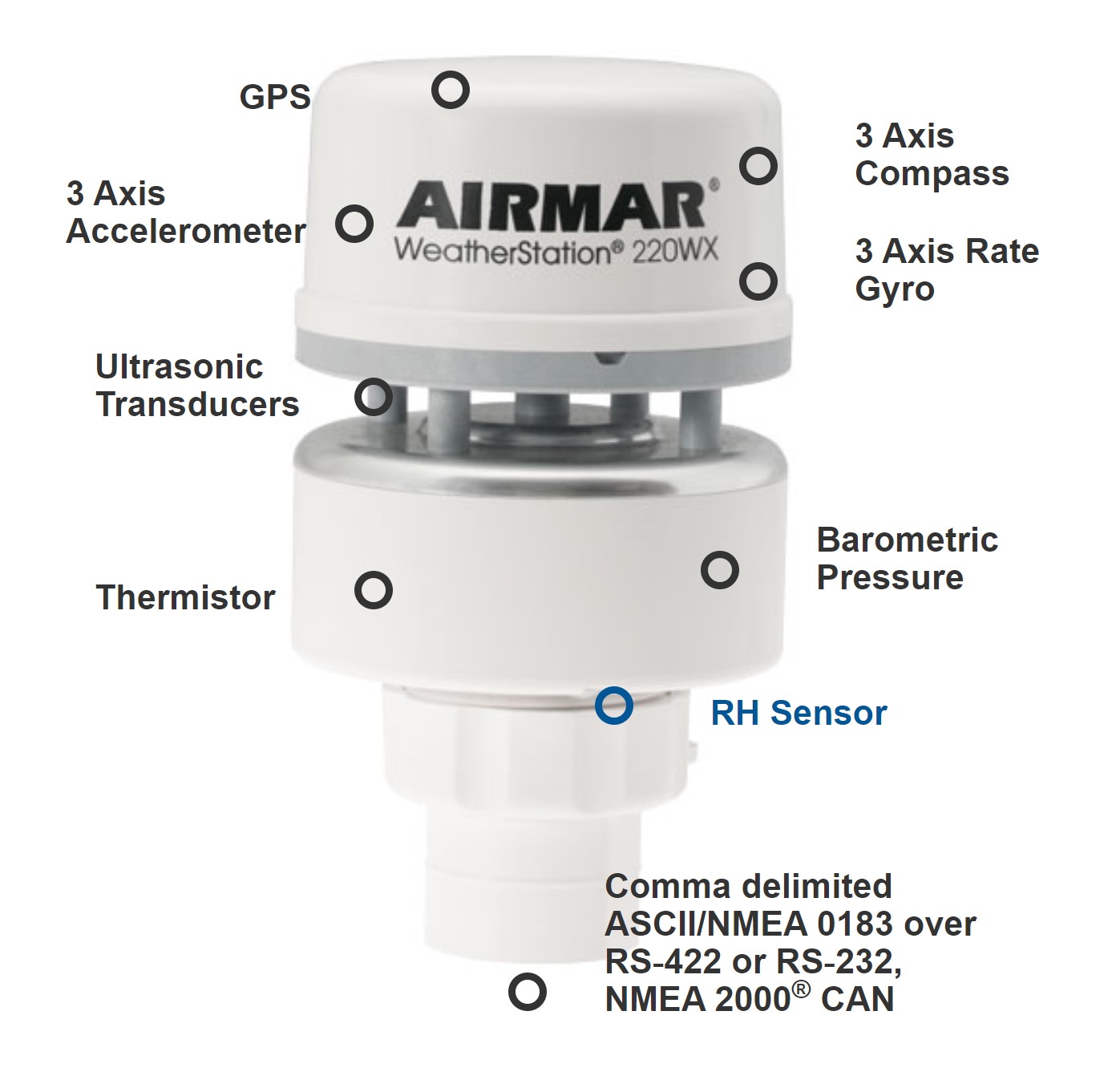
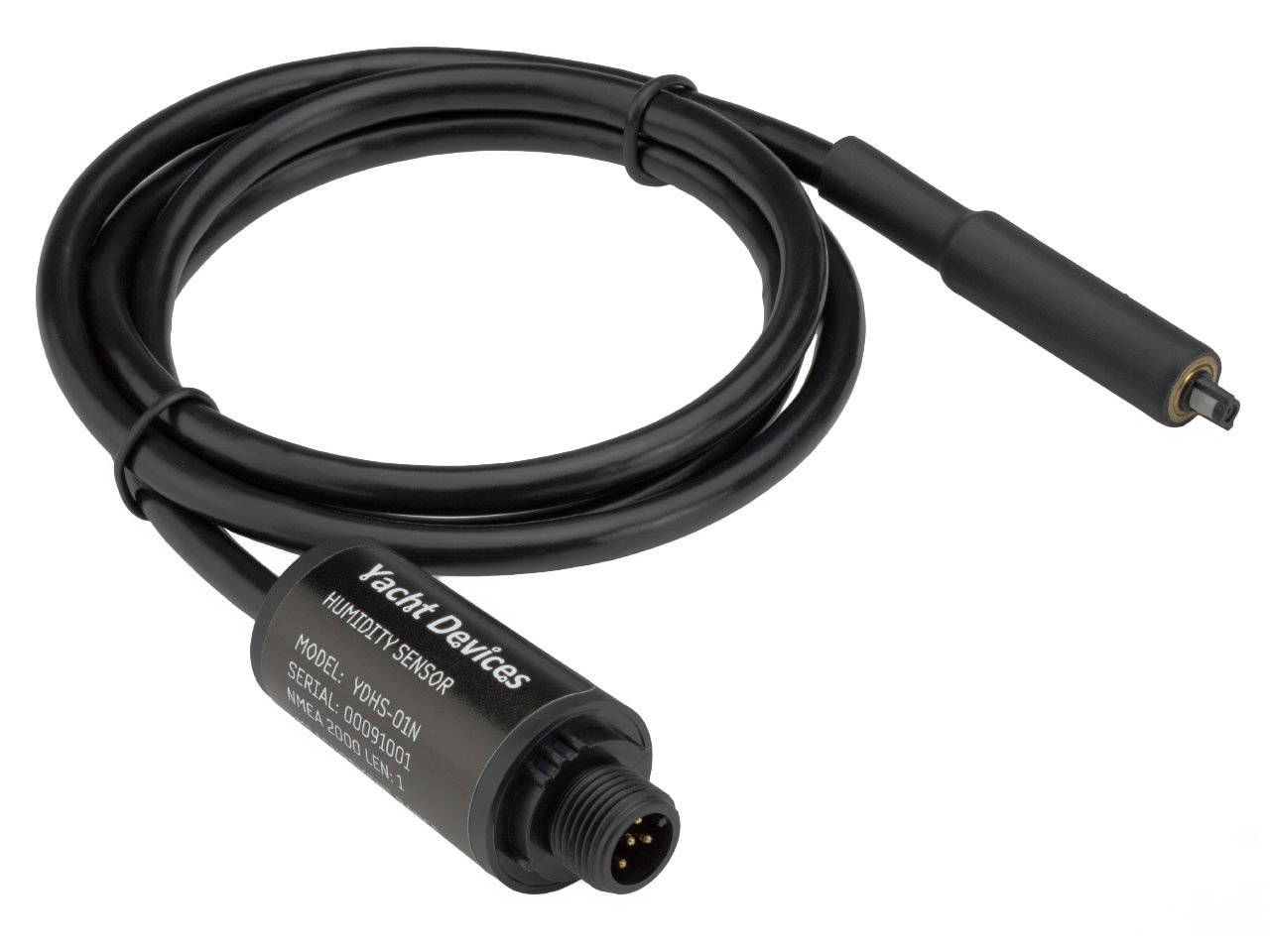
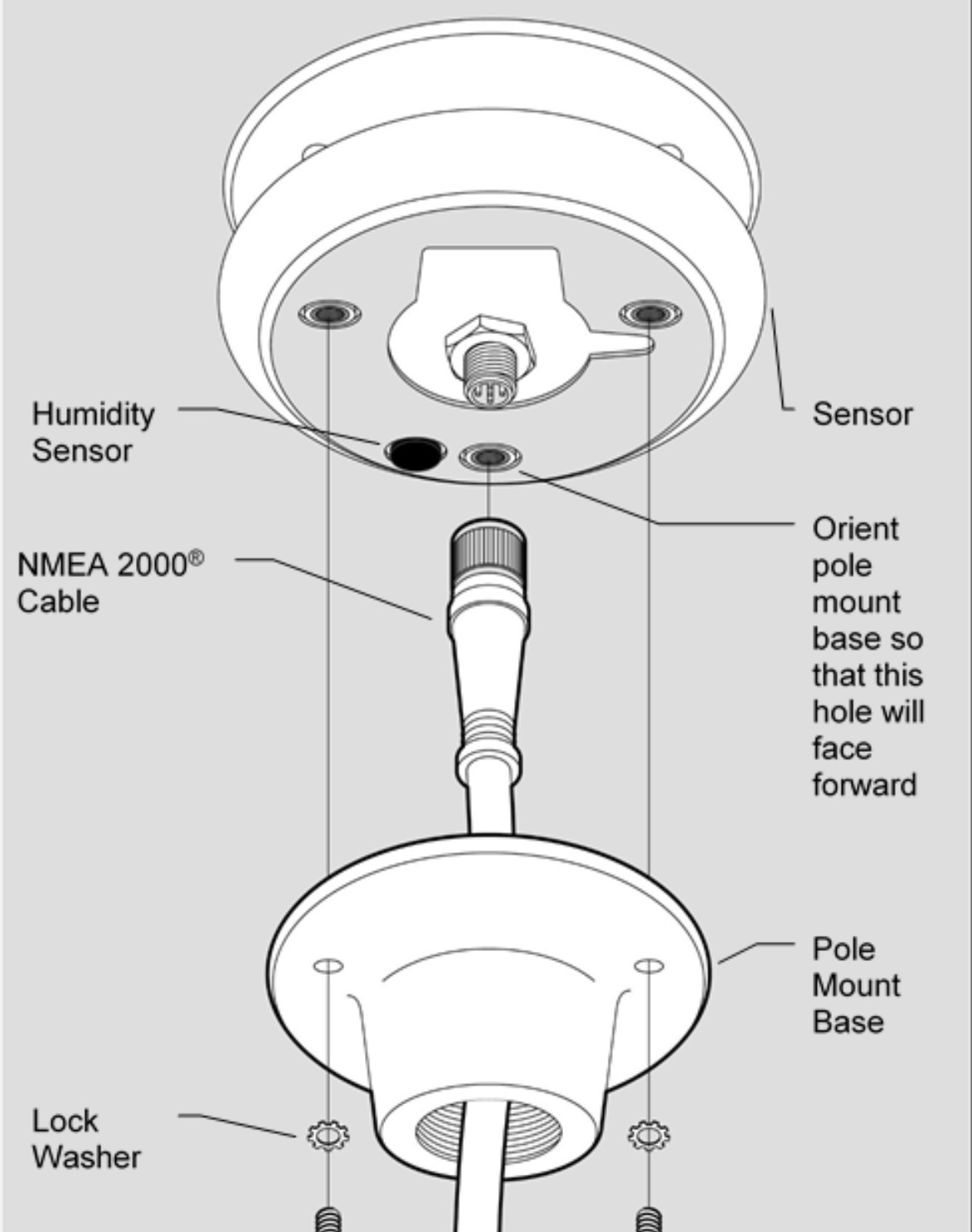
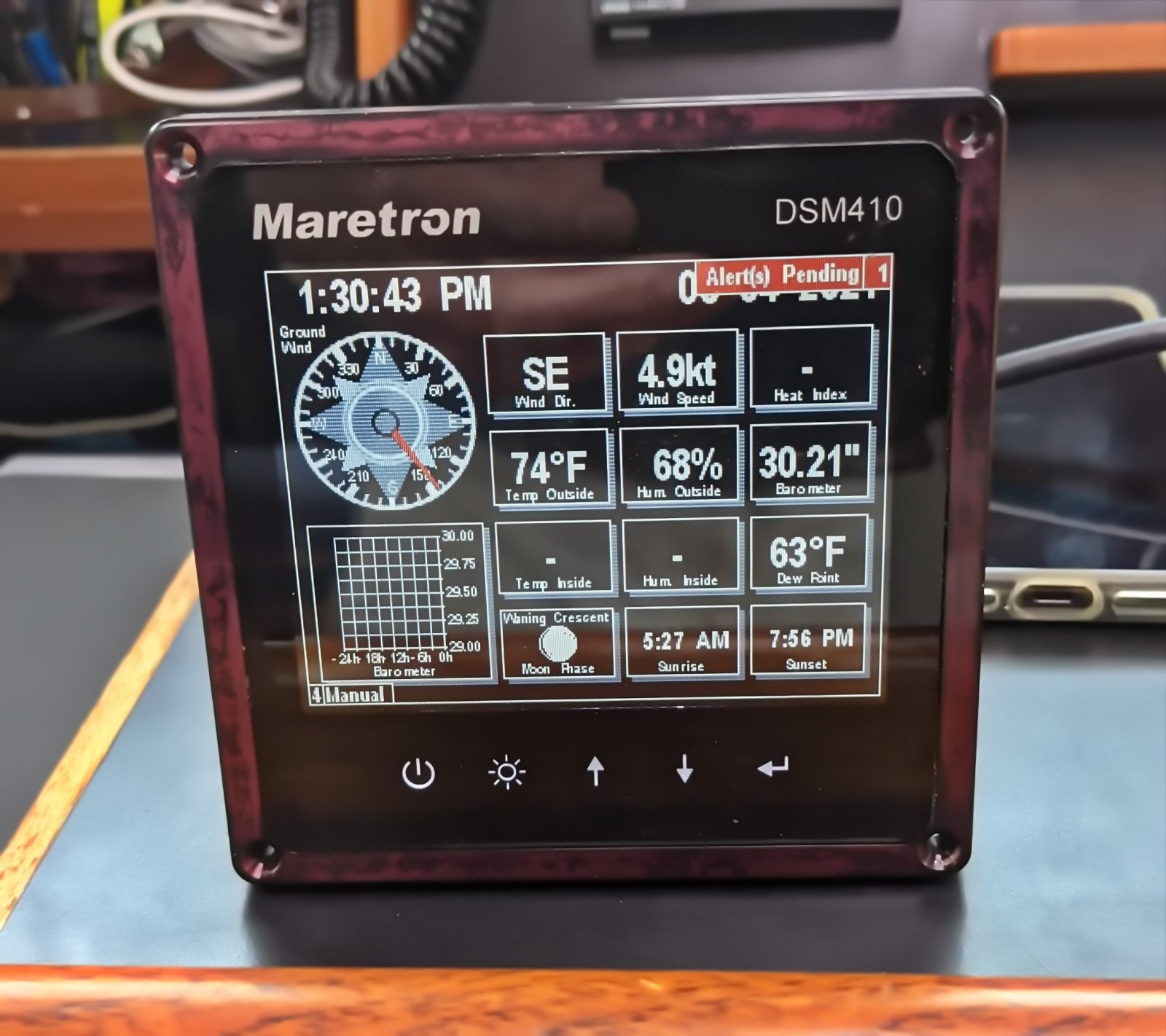
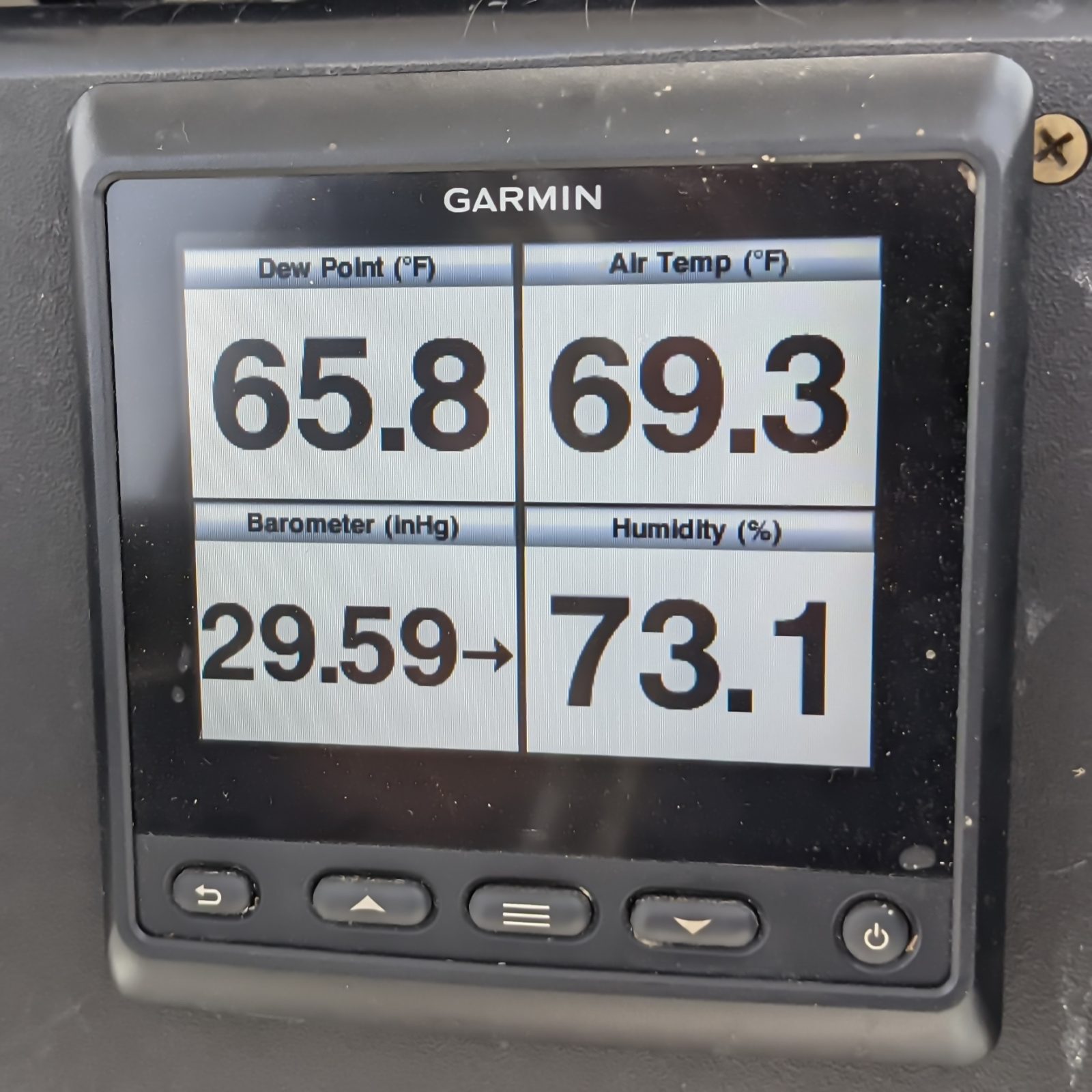
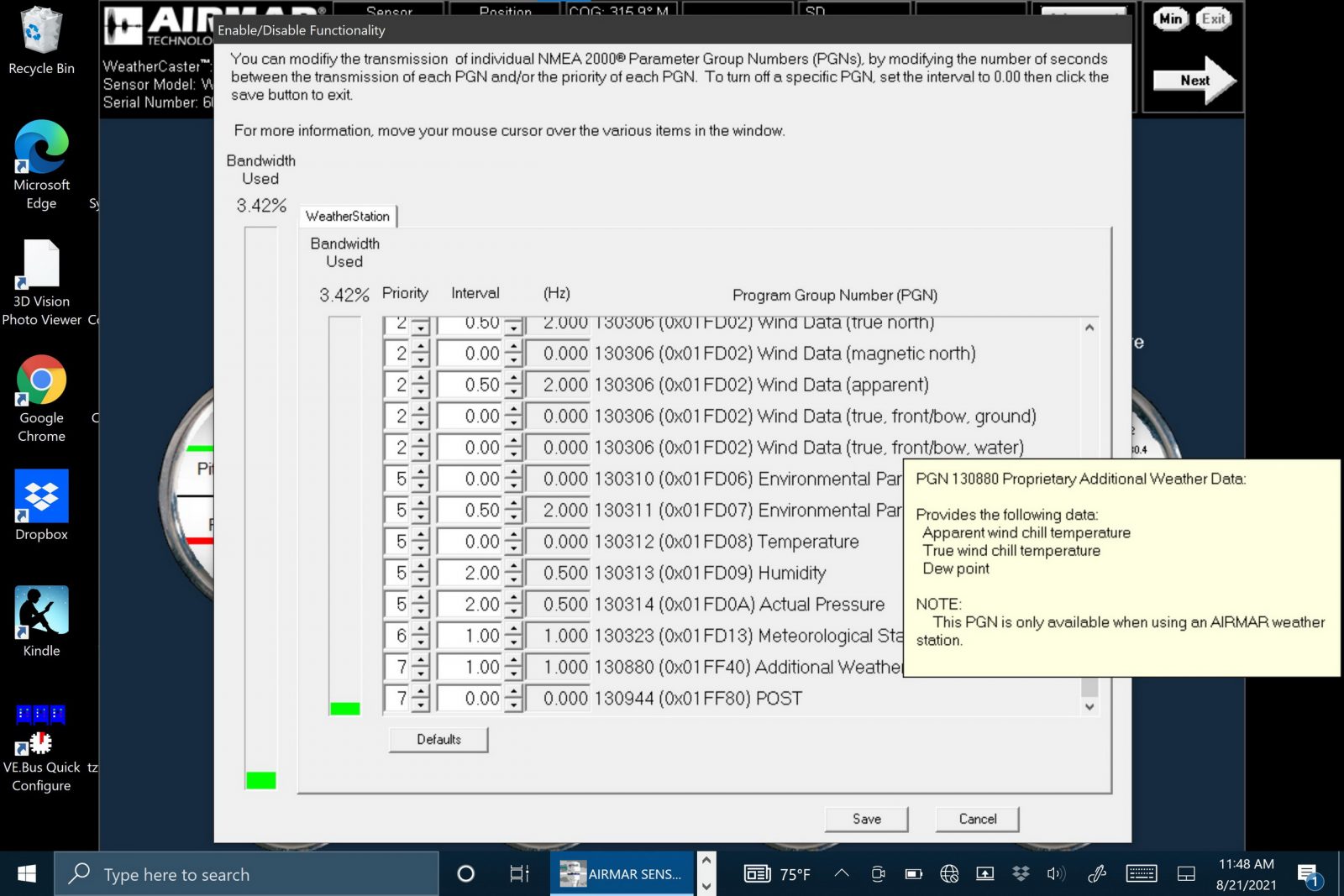
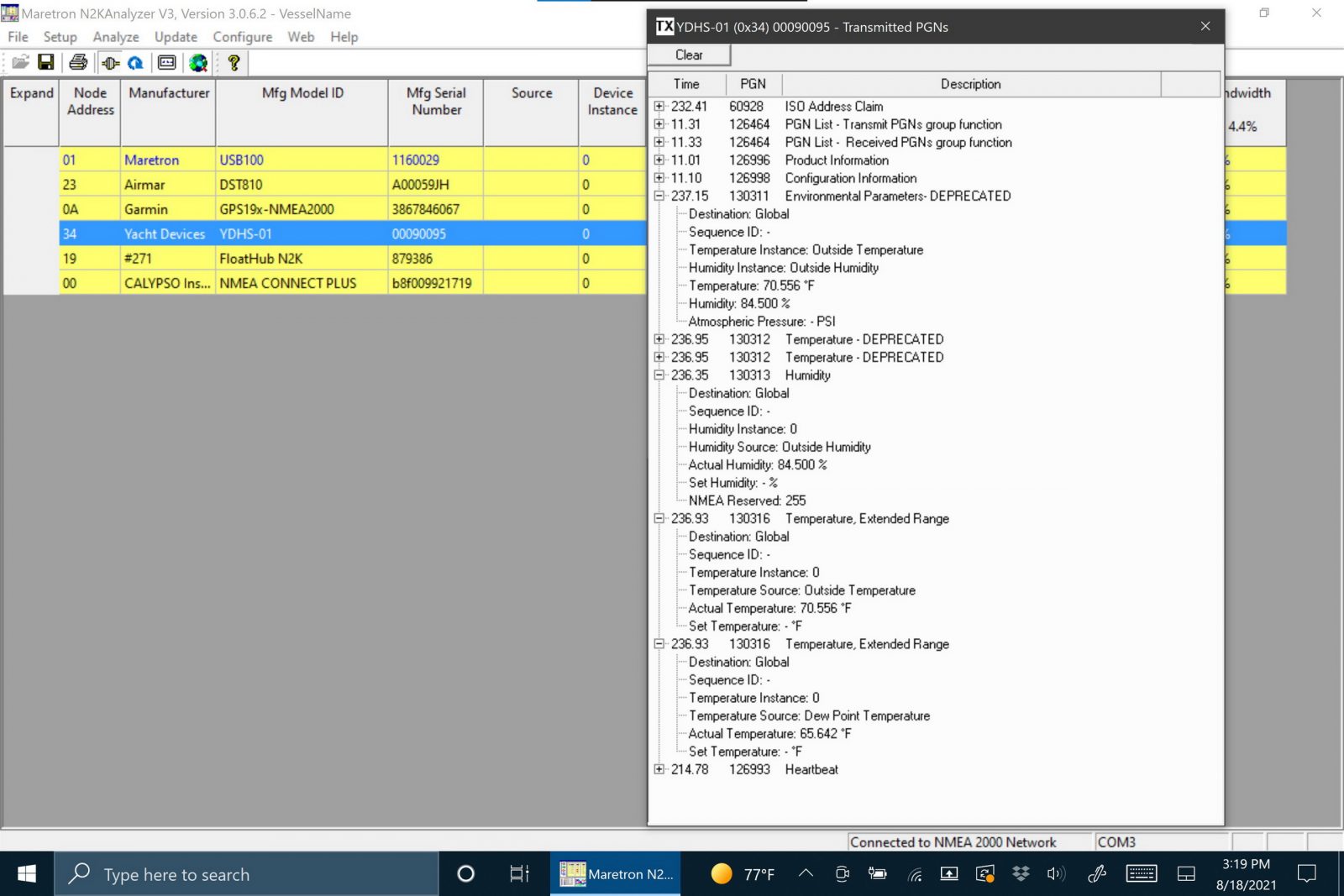












Loved the story. Placement of the humidity and temperature sensors is critical for accuracy. I’m thinking after end of house out of the wind induced by movement, but then again ambient wind speed effect is critical to an accurate reading. Any thoughts guys?
Thanks, Fred!
Yacht Devices has specific recommendations about how and where to mount the YDHS in its manual. The sensor tip should be in outside air but not in direct sun or rain. Possible locations they mention are under a cockpit table or standing shelter. But there is no mention of wind.
I haven’t yet seen Allan’s current YDHS install but I believe the sensor tip is on the back of Sally W’s faux stack but protected from rain and sun with a shield he already had, maybe from Davis. I’ll try to find out or maybe Allan will let us know. Also, Ben Stein told me that he’s getting good results with a YDHS mounted in one his engine room vents.
Ben, I went through this with Maretron back in the 2012 time frame – I still have the screenshots from N2K Analyzer showing the WSO100 outputting PGN 130313 with zero and blank fields in the humidity fields. Maretron at the time refused to swap it out under warranty, and insisted we send it for repair. It came back with the humidity sensor replaced and working, but the air temperature needed to be offset almost 35% to read accurately! The humidity sensor failed again the following year, and the next time we tried to have it repaired, they weren’t even fixing them anymore and discontinued the product. I thought by now they would have come up with a reliable replacement, but apparently they’ve ceded that market to Airmar. Very disappointing…
Sorry to hear that, Grant, but have also heard rumors of failing humidity sensors in Airmar WX devices. Maybe that’s why they made the sensor optional in more recent models and also replaceable in the field. Were you hoping to have dew point temp on your boat and, if so, did you get it somehow?
Actually it was another guys boat, and he would have been happy to just get humidity displayed – but at the time the Airmar replacement was north of 1K and he decided he didn’t need it that bad. Personally I love the idea of dew-point temperature, especially if you can read it to one decimal place – as shown in your article. I’m glad the sensors are now field-replaceable, that’s a big help!
I use a YD sensor, I printed the casing on a 3D printer, it has been working for 2 years without any problems outside the yacht.
I have photos but it is not possible to attach to the answer.
https://www.sailforum.pl/download/file.php?id=66546&t=1
https://www.sailforum.pl/download/file.php?id=66547&t=1
Looks sharp, Christopher. Maybe YD should include a shield like that. Do you find dew point useful?
Yes the dew point is very handy, I saw the temperatures level out on a Sunday night and I got foggy in the early morning as I sailed out into the bay.
I showed the project last year, Aleksandr from YD ;-).
Good article and great info. I’ve been holding back on a weather station because the cheap ones are just not that accurate and where I boat (ICW and Loop) weather is easy to get. But would like one, especially with the temp/due point and wind, corrected with boat speed. So, I’m following this.
And, temp/due point is a great tool, but not an absolute. Fog can form with a spread and may not form if they are the same… lots of other factors.
And there’s fog… and there’s fog where you have a hard time seeing your hand, which is something that most of us would most likely avoid. And, how wide spread is the fog? However, there’s an argument to get all the info you can to deal with fog.
How do you get the Maretron DSM410 to display 16 different data sets? The manual only shows a max of 4 fields.
It’s true that a user-built screen can only include four fields, but Maretron also offers several prebuilt screens like Weather Display:
https://www.maretron.com/support/manuals/DSM410UM_1.7.2.html#_Toc482694040
You can modify that screen but it’s pretty nice as is.